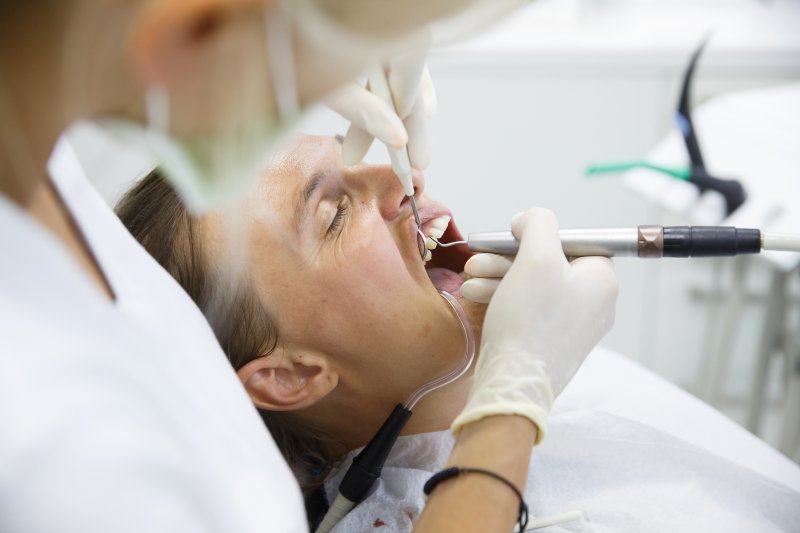When it comes to gum disease, the first signs to watch for are bleeding, swelling, and a little tenderness in your gums. This early stage is called gingivitis, and it happens when plaque builds up along your gumline, causing irritation. If left unchecked, gingivitis can lead to periodontal pockets (small spaces that form when your gums begin to pull away from your teeth), making it easier for bacteria and food particles to get trapped. This stage is known as periodontitis, and it’s something we want to catch early to avoid bigger problems down the road.
How Do Periodontal Pockets Form?
When faced with gum disease, the earliest symptoms include bleeding, inflammation, and soreness. This phase is called gingivitis, and it happens as a result of plaque accumulating on teeth and the gumline, resulting in irritation to the gum tissues.
Over time, if these symptoms are left untreated, periodontal pockets will form. This is when the gums begin to pull away from the teeth, creating small pouches that can easily trap bacteria, food debris, and other harmful particles. This phase is commonly known as periodontitis.
As plaque and tartar continue to spread into the pockets, they will begin attacking the bone, which can lead to tooth loss.
How Can You Spot Periodontal Pockets?
To the naked eye, periodontal pockets may not be easy to see; however, a dentist can chart and measure these spaces to determine if gum disease is present and how severe it is.
If there appears to be a gap that is 4 mm deep or more, there is a good chance that a gum pocket is forming. Dentists tend to recommend deep cleaning or other forms of periodontal treatment if pockets appear to be 5 mm or more.
Is There Treatment for Periodontal Pockets?
Yes, you can receive professional treatment to reduce your periodontal pockets. Your dentist may suggest:
- Regular at-home oral hygiene and frequent dental cleanings to reduce the size of the pockets and reverse other symptoms associated with gum disease (i.e., bleeding, inflammation, soreness, etc.)
- Scaling and root planing, which is known as deep cleaning because it targets and removes accumulated plaque and tartar around teeth and the gumline as well as deep within the pockets. This process encourages healthy gum reattachment.
- Pocket reduction, which is a procedure that requires lifting the pocket so that more advanced scaling and root planing can occur. Once finished, the gum tissue will be put back in place.
More involved procedures, like bone grafting or soft tissue grafts, may be required depending on the severity of your gum disease.
No matter which type of treatment your dentist recommends, you can rest assured that you can reduce the size of your gum pockets while also achieving better gum health.
About the Practice
Page Family Dental consists of multiple dentists and a skilled periodontist, Dr. Linda Park, on staff who is an expert in treating patients with gum disease. By providing safe and reliable solutions that are designed to eliminate harmful bacteria and restore the health of these soft oral tissues, we can ensure better gum health in the future and minimize the chances of serious reinfection over the years. If you are concerned about your smile and want to learn more about gum disease treatment, contact us at (781) 284-5443.

